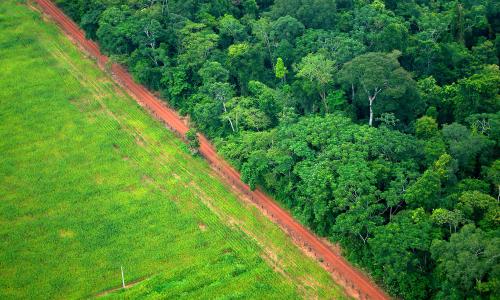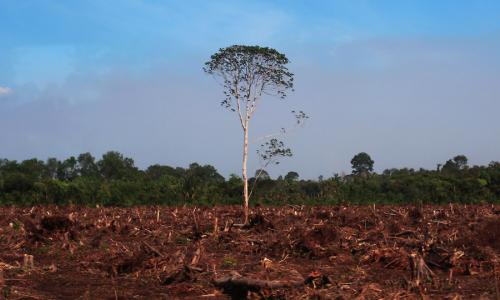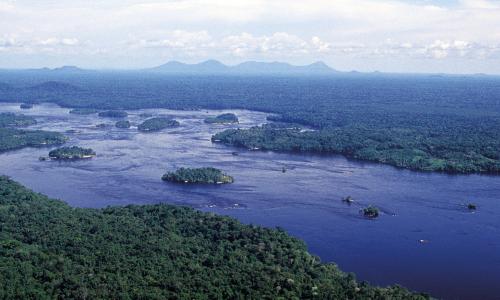The trees of tropical forests, like all green plants, take up carbon dioxide from the atmosphere and release oxygen during photosynthesis. They also carry out the opposite process—known as respiration—but when forests are growing, photosynthesis exceeds respiration, and the surplus carbon is stored in tree trunks and roots and in the soil. This is called “sequestration.”
When forests are cut down, much of that stored carbon is released into the atmosphere again as carbon dioxide (CO2). This is how deforestation and forest degradation contribute to global warming.
The consensus among climate scientists is that CO2 from tropical deforestation now makes up less than 10 percent of global warming pollution. This percentage has gone down in recent decades, partly due to some success in reducing deforestation, but also because greenhouse gases from burning fossil fuels—by far the principal cause of climate change—have continued to increase.
Where and why deforestation is happening
The planet’s largest areas of tropical forest are the Amazon basin in South America, the Congo Basin in Central Africa, and Southeast Asia. The amount of deforestation, and its causes, are quite different in these three regions.
Forests are cleared to make way for any of a long list of agricultural products and other human activities. But most of the tropical deforestation occurring today can be traced to just four globally traded commodities: beef, soybeans, palm oil, and wood products.
Amazonia has both the largest area of tropical forest and the highest rate of deforestation. Clearing forest to produce commodity crops, especially pasture for beef cattle and cropland for soybeans, is a main driver.
Deforestation in Southeast Asia is also driven by commodity production for the global market, but here it is palm oil plantations for vegetable oil that are the most important factor. Southeast Asia is also different because it has substantial areas of peat soil, which release large amounts of CO2 when they’re cleared and drained.
The Congo Basin, on the other hand, has a lower rate of deforestation, and it's driven mostly by traditional shifting cultivation. This means that the forest can grow back and take up some of the CO2 that was previously released.
Benefits of reduced deforestation and natural reforestation
Ending deforestation alone will not stop climate change—urgent action is needed to reduce the other 90 percent of emissions. But neither can the need to protect tropical forests, and grow them back where they’ve been cleared, be ignored.
It’s now known that even mature tropical forests sequester carbon; they took over a billion tons of heat-trapping gases out of the atmosphere in the 1990s and early 2000s. And young secondary forests—those growing back after clearing—make up about 28 percent of tropical forest area. Their potential sequestration is conservatively estimated at about 40 percent as much as would be achieved by ending deforestation, making them an important additional “natural climate solution.”
And ending deforestation and restoring forests has other benefits beyond reducing global warming pollution. Tropical forests are home to many unique species of animals and plants that risk extinction if we do not protect their habitat.
Tropical forests help regulate regional rainfall and prevent both floods and droughts. Reducing deforestation is not only a beneficial action against global warming—it also can make important contributions to saving biodiversity and supporting sustainable development.
Deforestation and reforestation solutions
The good news is that tropical deforestation can be reduced—and, in many places, already has been. A variety of approaches, from recognizing Indigenous groups’ sovereignty over their lands to civil society pressure on corporate deforesters to paying tropical countries that reduce their deforestation emissions (called “REDD+”), have shown promising results.
But there have been setbacks as well. Brazil was able to reduce deforestation by 70 percent between 2004 and 2012, but the Bolsonaro government in the late 2010s weakened enforcement and made racist attacks on Indigenous groups and their lands, reversing some of the steps forward. Continuing progress will require a sustained commitment by governments, businesses, and civil society worldwide to the goal of ending tropical deforestation.






